Jiangshi – Terrifying Vicious Ancient Chinese Vampire In Disguise
A. Sutherland - AncientPages.com - Myths and legends of Europe, the Americas, China, Japan, and India describe terrible bloodsuckers that may differ in power and individual characteristics. Still, all of them fascinate people, and their vampiric fright knows no borders.
The Jiangshi vampire. Credit: Adobe Stock - FantasyLand86
Influential legends about Jiangshi (or Jiang shi) have long inspired a genre of literature, movies, and video games, especially in Hong Kong and East Asia.
Jiangshi - a genuinely terrifying undead Chinese creature - is described in Chinese legends and folklore as a half-vampire, half-zombie.
Typically, the Jiangshi (hopping vampire or hopping zombie) is depicted as a stiff corpse dressed in the official garments of the Qing dynasty (1644–1912), the last great dynastic empire to rule the region, with many powerful and long-lived rulers.
The belief that the human body can walk and function without personal consciousness or the soul is an idea that has captivated human beings for centuries. This idea is partially implausible as it may be more accurate than one thinks. Within Chinese culture and folklore, strange stories describe a creature known as the Jiangshi. It is believed to be as real, deadly, and terrifying as zombies.
Perhaps the Jiangshi is only an unrealistic, evil creature in Chinese folklore that was used in simple stories to scare children; however, the most remote villages of China blindly believe in the existence of this entity from the underworld and many similar ones.
Are not all the legends based on true events?
According to Chinese legends and folklore, Jiangshi – (‘jiang’ means hard) is a reanimated corpse of a victim of drowning, suicide, hanging, or smothering. These creatures are believed to be particularly vicious, ripping the heads and limbs of their victims.
The Jiangshi is so stiff that it cannot bend its limbs and body, so it moves by hopping, with its arms always outstretched, seeking out living creatures at night and killing them by devouring their ‘qi’ life force. It helps the Jiangshi to survive.
The Jiangshi vampire wears a uniform coat-like robe and round, traditional mandarin hat; they cannot speak and have pale skin, furry green hair, sharp, long claw-like fingernails, and an extremely long tongue.
The Jiangshi is not traditionally equated with the zombie but instead a vampire. During the day, the Jiangshi rests in either a coffin or hides in a dark, chilly cave.
According to one Qing Dynasty scholar, Ji Xiaolan (1724–1805), Jiangshi creatures can be divided into two groups: an old corpse that hasn’t decomposed or a freshly dead body returning to life. When Jiangshi’s corpse is recently deceased, the creature looks almost like an average human. Others, who have been decomposing for some time, have rotting flesh hanging off their yellowing bones. Jiangshi lore is very ancient, and the creature’s existence was taken very seriously by scholars in ancient China who speculated on how Jiangshi was created.
In the meantime, ancient Chinese sincerely believed in dangerous encounters with Jiangshi and tried to protect their homes.
Slats of wood 6 inches high were built under doors in the strange belief that these would keep out hopping zombies. To keep a Jiangshi in place, a slip of yellow paper with a spell written on it was usually also stuck on the corpses.
But the best way to eliminate this terrifying creature was to ask a Taoist priest for help. He was the only one who could balance their life and death with dark and light.
In popular Chinese mythology, reanimated corpses that hop around, killing living creatures to absorb life essence from their victims. Jiangshi is also pronounced Geung si, which is the Cantonese pronounciation for 'Hopping Corpse'. They are said to be created when a person's soul fails to leave the deceased's body.
The myth of "The Corpses who travel a Thousand Li" describes Tao wizards who transport corpses over long distances to hop on their own feet back to their hometown for proper burial. But there were also people who believed that hopping corpses were originally smugglers in disguise who wanted to scare off law enforcement officials
Hopping Corpses were a popular subject in Hong Kong movies during the 1980s;
some movies even featured both Chinese Hopping Corpse and "Western" zombie. In
the movies, hopping corpses can be put to sleep by putting on their foreheads a piece
of yellow paper with a spell written on it.
Generally in the movies these terrifying figures are dressed in imperial Qing Dynasty clothes, their arms are always outstretched due to rigor mortis. They can be evaded by holding one's breath, as they track living creatures by detecting their breathing.
Written by – A. Sutherland AncientPages.com Staff Writer
Updated on February 16, 2024
Copyright © AncientPages.com All rights reserved. This material may not be published, broadcast, rewritten or redistributed in whole or part without the express written permission of AncientPages.com
Expand for referencesReferences:
K.W. Bishop, 'How zombies conquered popular culture'.
More From Ancient Pages
-
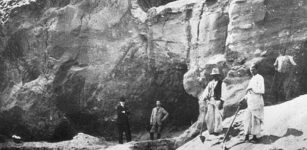 Neanderthals Decorated Their Caves With Rocks 130,000 Years Ago – Find At Krapina Site Reveals
Archaeology | Jan 19, 2017
Neanderthals Decorated Their Caves With Rocks 130,000 Years Ago – Find At Krapina Site Reveals
Archaeology | Jan 19, 2017 -
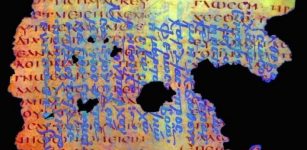 Never-Before-Seen Ancient Texts Hidden In Saint Catherine’s Monastery In Sinai Are Now Available Online
Archaeology | Dec 21, 2017
Never-Before-Seen Ancient Texts Hidden In Saint Catherine’s Monastery In Sinai Are Now Available Online
Archaeology | Dec 21, 2017 -
 Modern Humans Traveled Across The Eurasian Steppe 45,000 Years Ago
Archaeology | Aug 20, 2019
Modern Humans Traveled Across The Eurasian Steppe 45,000 Years Ago
Archaeology | Aug 20, 2019 -
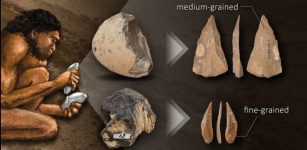 Paleolithic Humans May Have Understood The Properties Of Rocks For Making Stone Tools
Archaeology | Dec 2, 2023
Paleolithic Humans May Have Understood The Properties Of Rocks For Making Stone Tools
Archaeology | Dec 2, 2023 -
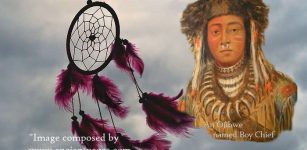 Dreamcatcher: Powerful Protective Amulet Of North American Indian People
Ancient Traditions And Customs | Mar 20, 2020
Dreamcatcher: Powerful Protective Amulet Of North American Indian People
Ancient Traditions And Customs | Mar 20, 2020 -
 Advanced Ancient Civilization’s Encounter With Primitive People Led To Something Extraordinary – Thought-Provoking Theory Suggests
Civilizations | Dec 19, 2018
Advanced Ancient Civilization’s Encounter With Primitive People Led To Something Extraordinary – Thought-Provoking Theory Suggests
Civilizations | Dec 19, 2018 -
 Rare Ancient Drawings Offer Evidence Moluccan Boats Visited Australia From Indonesia?
Archaeology | May 31, 2023
Rare Ancient Drawings Offer Evidence Moluccan Boats Visited Australia From Indonesia?
Archaeology | May 31, 2023 -
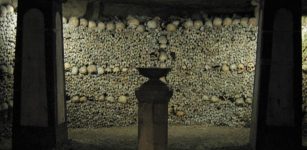 Paris Catacombs: Huge Underground Labyrinth Full Of Secrets
Featured Stories | Jan 3, 2016
Paris Catacombs: Huge Underground Labyrinth Full Of Secrets
Featured Stories | Jan 3, 2016 -
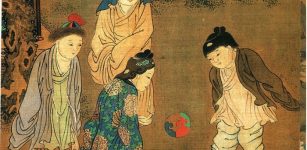 Ancient Chinese Ball Game Cuju Is Earliest Form Of Football
Ancient History Facts | Jan 22, 2016
Ancient Chinese Ball Game Cuju Is Earliest Form Of Football
Ancient History Facts | Jan 22, 2016 -
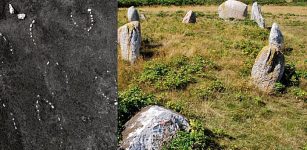 Mystery Of Viking Ship Burials In Hjarnø, Denmark And Their Unusual Design
Archaeology | Jun 1, 2021
Mystery Of Viking Ship Burials In Hjarnø, Denmark And Their Unusual Design
Archaeology | Jun 1, 2021 -
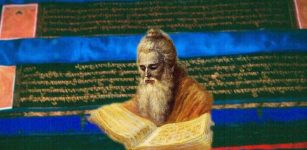 2,500-Year-Old Tibetan Medical Text Describes A Coronavirus-Like Outbreak In Surprisingly Accurate Details
News | Oct 26, 2020
2,500-Year-Old Tibetan Medical Text Describes A Coronavirus-Like Outbreak In Surprisingly Accurate Details
News | Oct 26, 2020 -
 Forseti: Norse God Of Justice And Lawmaker Who Lived In A Shining House
Featured Stories | May 1, 2016
Forseti: Norse God Of Justice And Lawmaker Who Lived In A Shining House
Featured Stories | May 1, 2016 -
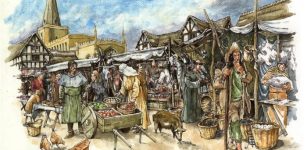 ‘Bone Biographies’ Reveal Lives Of Medieval England’s Common People And Illuminate Early Benefits System
Archaeology | Dec 6, 2023
‘Bone Biographies’ Reveal Lives Of Medieval England’s Common People And Illuminate Early Benefits System
Archaeology | Dec 6, 2023 -
 On This Day In History: Battle Of Lagos Took Place Between Royal Navy Of Britain and France – On August 19, 1759
News | Aug 19, 2016
On This Day In History: Battle Of Lagos Took Place Between Royal Navy Of Britain and France – On August 19, 1759
News | Aug 19, 2016 -
 Stone Tools In Lapa do Picareiro Cave Reveal Modern Humans Reached Western Parts Of Europe 5,000 Years Earlier Than Previously Thought
Archaeology | Sep 30, 2020
Stone Tools In Lapa do Picareiro Cave Reveal Modern Humans Reached Western Parts Of Europe 5,000 Years Earlier Than Previously Thought
Archaeology | Sep 30, 2020 -
 Valley Temple At Giza: Great Masterwork Testifies To Remarkable Engineering Skills Of Megalith Builders
Ancient Technology | Jun 9, 2017
Valley Temple At Giza: Great Masterwork Testifies To Remarkable Engineering Skills Of Megalith Builders
Ancient Technology | Jun 9, 2017 -
 World’s Oldest Beer Factory Discovered In Abydos, Egypt
Archaeology | Feb 16, 2021
World’s Oldest Beer Factory Discovered In Abydos, Egypt
Archaeology | Feb 16, 2021 -
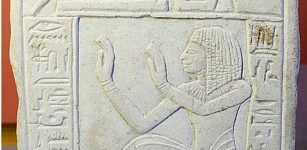 Meretseger: Theban Cobra Goddess Who Presided Over The Valley of The Kings
Egyptian Mythology | Jul 10, 2021
Meretseger: Theban Cobra Goddess Who Presided Over The Valley of The Kings
Egyptian Mythology | Jul 10, 2021 -
 Ancient City Of Troy Was Destroyed By An Earthquake That Ended The Trojan War – Archaeologists Say
Archaeology | Jun 14, 2017
Ancient City Of Troy Was Destroyed By An Earthquake That Ended The Trojan War – Archaeologists Say
Archaeology | Jun 14, 2017 -
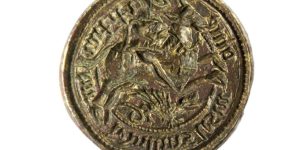 Rare Bronze Seal Matrix Of St. George Slaying The Dragon Discovered In French Castle
Archaeology | Mar 22, 2022
Rare Bronze Seal Matrix Of St. George Slaying The Dragon Discovered In French Castle
Archaeology | Mar 22, 2022

